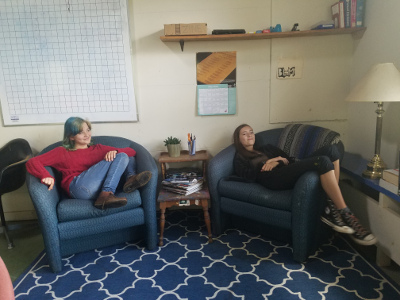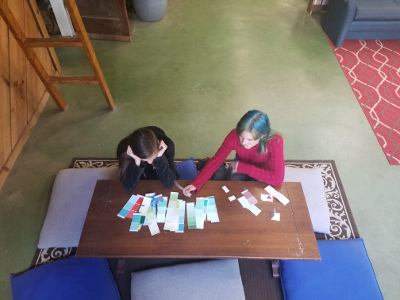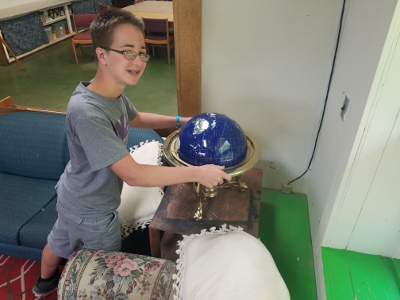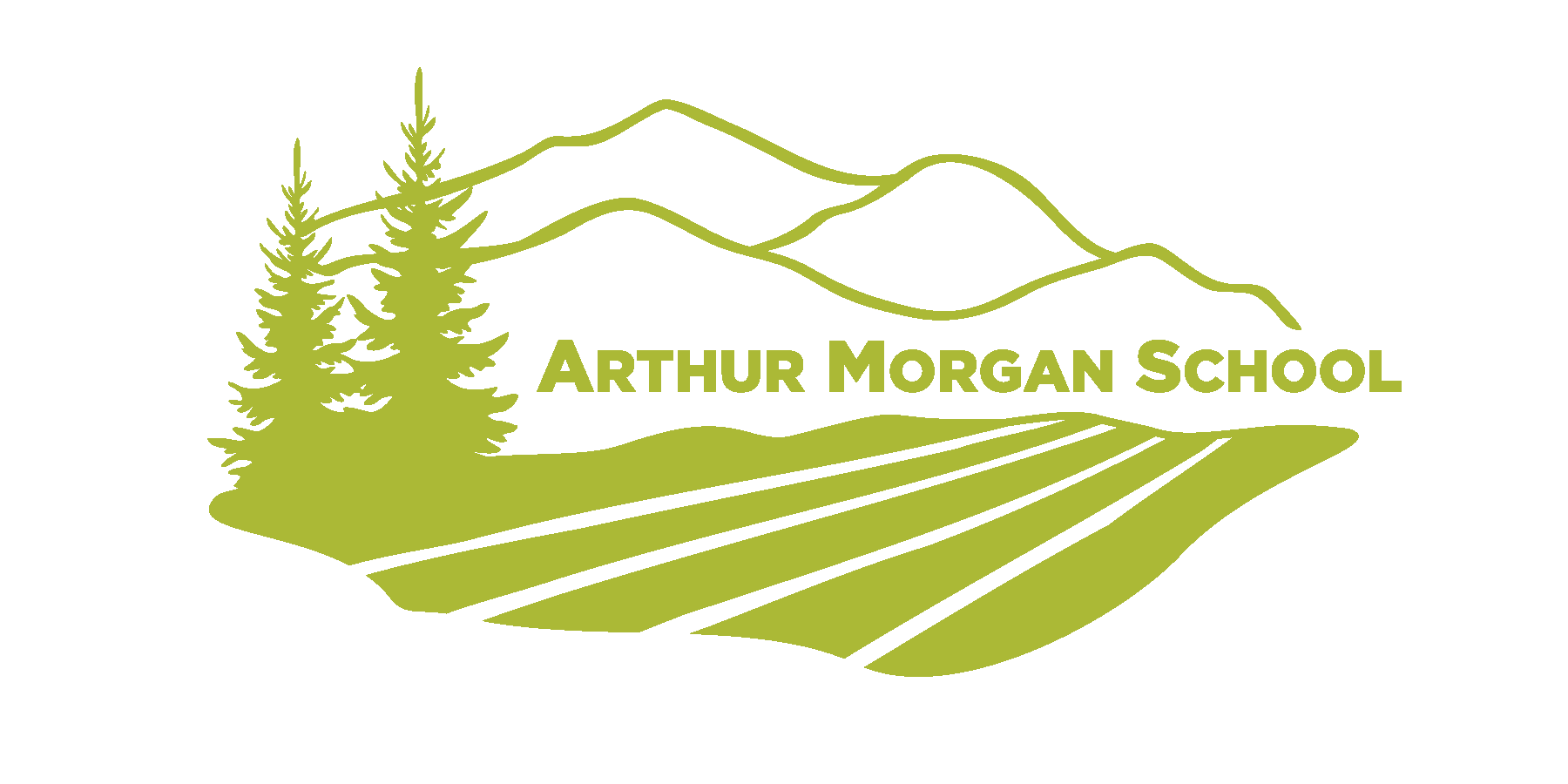What a Middle School Classroom Should Look Like

Teachers and students understand the importance of well laid out classroom. The right environment will inspire creativity and a good work ethic. It will help students feel ready to learn and a sense of ownership over their studies. According to teachingonpurpose.org, there is a direct correlation between student behavior and the classroom set up. Students are more comfortable and are more likely to speak up when they feel like their classroom is well organized and prepared.
The students of Arthur Morgan School have been giving their classrooms a lot of thought lately. In an internship this spring students studied educational philosophy and determined what would make productive and inviting classroom spaces. They designed the rooms and constructed to materials to make each room an inspiring space. They decided exactly what a middle school classroom should look like!
A Creative Use of Classroom Space
 AMS doesn’t use traditional classrooms very often. Science and history are taught in internships that use the work of the school to teach valuable skills and lessons. Students learn while tending the garden, making meals, or doing maintenance. Art classes are taught in prepared studios and Spanish is often taught through interactive play or conversation. We do have classrooms though and use them every morning for math and language arts.
AMS doesn’t use traditional classrooms very often. Science and history are taught in internships that use the work of the school to teach valuable skills and lessons. Students learn while tending the garden, making meals, or doing maintenance. Art classes are taught in prepared studios and Spanish is often taught through interactive play or conversation. We do have classrooms though and use them every morning for math and language arts.
Hopkins, the school’s main academic hub was one of the first buildings built on campus. Students built it during the work camps that gave rise to the school. Over the years the classrooms have looked very different. At one point the classrooms housed the school’s print shop where they printed paper and books to sell. At other times, they have been used as art spaces. Students this year wanted to transform Hopkins into a space where they were inspired to learn.
Building a Better Classroom
The class started by surveying students about how they wanted to feel while in their classrooms. Their answers included motivated, inspired, focused, calm, and cozy. They then looked at Montessori, Sudbury, Reggio Emilia, and Danish folk school educational philosophies as they apply to preparing classroom spaces and the decision-making process of a student body. Here is what they found:
- The Montessori classrooms always have plants, art, accessible storage at kid-level, and neutral colors. Everything in the space has a purpose and is neat and organized.
- Reggio Emilia schools emphasize the importance of beauty and art as a language. The environment is considered the “third teacher.” Providing a beautiful environment is believed to show respect for the students.
- Danish Folk Schools were influential in the formation of AMS and are meant to provide an empowering place for a community to grow and learn. The idea is that the hands-on, empowering work that they do in school leads to a greater sense of personal investment and ownership in the community space.
Getting to Work
The students reflected on these ideas and came up with ideas on how to modify AMS’s classrooms. Using color theory, they had long discussions about new colors for the walls and shelves. They moved furniture around into different arrangements several times, getting feedback from their peers each time. They also got rid of things that didn’t need to be in the classrooms, decluttering the spaces. Then they added lighting, plants, floor cushions, and blankets to the spaces to make them feel more cozy. The students noticed that when they moved things in such a way that the space was opened up and felt bigger, they got good responses from people and felt better themselves.
 As a final project, the class designed and almost completed a shelving unit specifically for the school’s microscopes. This cleared up space for books and other science equipment while also teaching the students valuable woodworking lessons.
As a final project, the class designed and almost completed a shelving unit specifically for the school’s microscopes. This cleared up space for books and other science equipment while also teaching the students valuable woodworking lessons.
Not many people would think that classroom design would make an exciting internship for middle schoolers. However, by the end of this course, the students have a strong understanding of what a middle school classroom should look like. They feel successful and learned valuable research and construction skills. They have a sense of ownership over their classroom spaces and are now invested in improving and taking care of them for future AMS generations.
-by Natalie Monaghan and Jake Silver
